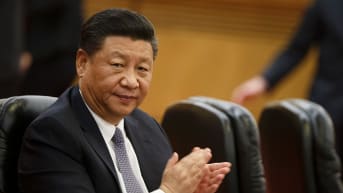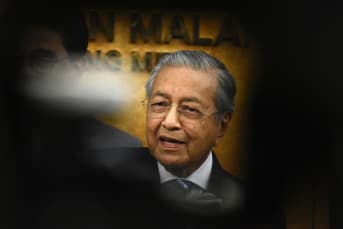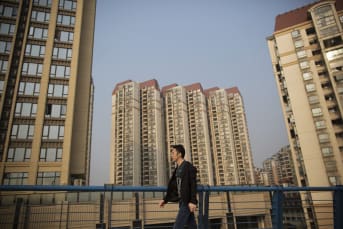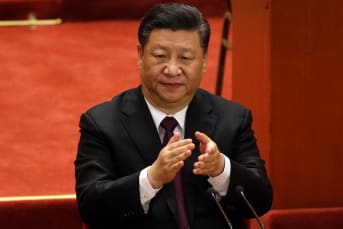Please use the sharing tools found via the share button at the top or side of articles. Copying articles to share with others is a breach ofFT.comT&Csand Copyright Policy. Email licensing@ft.comto buy additional rights. Subscribers may share up to 10 or 20 articles per month using the gift article service. More information can be found here.
https://www.ft.com/content/27950522-22dc-11e9-b329-c7e6ceb5ffdf
Some global investors with an eye on China act as if trade friction between the mainland and the US is the only factor worrying markets. That has especially been the case for investors in China shares. But investors also need to pay attention to the dynamics of corporate credit in China — and not just the last salvo between the two competing powers. The fact is, the country is in the grip of a credit crunch. The year 2018 saw a record number of defaults by number and total value, as Beijing clamped down on lending via both official and unofficial channels in an effort to slow the growth of debt, especially in the corporate sector. The cumulative value of troubled debt may be over $3tn, according to estimates from Hong Kong-based Clearwater Capital. The growing number of defaults and non-performing loans are the product of both financial tightening and the fact that regulators are forcing the banks to cease efforts to conceal problem loans. As a result, China is joining India as a new hotbed for distressed-debt specialists. They include some of the most well-known firms across the Pacific, including Blackstone, Centerbridge and Oaktree, who join longtime investors in the region such as Avenue Capital or PAG. Some have relatively little business elsewhere, given that major central banks are still providing extraordinary levels of support. China’s tightening last year was far more severe than many analysts predicted. The rate of growth of bank credit was well below that of nominal gross domestic product, according to strategist Christopher Wood of the CLSA unit of Citic Securities. And other financing channels such as capital markets did not compensate. The slowdown in so-called “total social financing”, which captures everything from bonds to insurance repayments, was even more dramatic. One company which hit trouble was Gansu Gangtai Group, a privately owned jewellery retailer. It defaulted in the autumn on two separate corporate bonds worth a combined Rmb1bn ($149m), after investors exercised options to sell them back to the company. Events like this create “a vicious cycle in which loss of liquidity leads to defaults which lead to even more loss of liquidity”, said Thomas Gatley, analyst at Gavekal Dragonomics, a research boutique. The credit crunch has hit privately owned enterprises especially hard because they have always relied on the “grey” market — a network of trust companies, fund managers and loosely regulated finance firms — which is slowly being rubbed out by Beijing. That has harmful effects, since today private companies account for far more economic growth and job creation than the state-owned enterprises. Today, the market for troubled debt is becoming more institutionalised By mid-November of last year, 22 private companies had failed to repay Rmb37bn of bonds, compared with nine companies which failed to repay Rmb10bn the previous year, according to data from Mr Gatley. Private firms “experienced six months of negative net issuance as they struggle to refinance maturing bonds”, he noted. By the end of last year, though, there were signs that monetary policy was becoming more generous. “The deleveraging campaign is now no longer as focused on credit tightening and [is] more fixated on addressing problems in the existing stock of debt via [non-performing loan] recognition and disposal,” said Jason Bedford and May Yan, of UBS in Hong Kong, in a recent report. In January the People’s Bank of China made two cuts to the amount of cash that commercial banks have to keep as reserves. The PBoC is also providing Rmb10bnto the China Bond Insurance Corp, a state-owned credit guarantee fund, to support debt sales by private firms. Moreover, bank lending and corporate bond issuance has picked up since the end of the year, with $3.7bn of US dollar bonds issued in the second week of January alone. Meanwhile, spreads on high-yield US dollar bond issues by Chinese companies have narrowed compared with their US counterparts. But will there be worse to come — especially for privately owned enterprises? Recommended beyondbrics China’s slowdown is of its own doing Without solid support from the shrinking shadow banking market where private firms could go for help in refinancing loans and maturing bonds, it is hard to be optimistic. Furthermore, in addition to the Rmb280bn in bonds that will mature this year there are another Rmb283bn that become callable, Mr Gatley calculates. Today, the market for troubled debt is becoming more institutionalised; indeed Shenzhen has just established the first bankruptcy court in China. There are now so many players that it is possible to go on the website of e-commerce giant, Alibaba, and purchase non-performing loans. Competition has driven down prices dramatically. Those price drops “will magnify impairment losses [for lenders] and slow the pace of the process”, Mr Bedford and Ms Yan added. Moreover, the two analysts have found cases where local investment firms which play in the distressed-debt market become distressed themselves, or have shareholders with undisclosed ties to the firms whose debt they purchase. Given these factors, then, expect some messy workouts. Distress in China may prove as stressful for investors as it is for issuers.
https://www.ft.com/content/27950522-22dc-11e9-b329-c7e6ceb5ffdf
Some global investors with an eye on China act as if trade friction between the mainland and the US is the only factor worrying markets. That has especially been the case for investors in China shares. But investors also need to pay attention to the dynamics of corporate credit in China — and not just the last salvo between the two competing powers. The fact is, the country is in the grip of a credit crunch. The year 2018 saw a record number of defaults by number and total value, as Beijing clamped down on lending via both official and unofficial channels in an effort to slow the growth of debt, especially in the corporate sector. The cumulative value of troubled debt may be over $3tn, according to estimates from Hong Kong-based Clearwater Capital. The growing number of defaults and non-performing loans are the product of both financial tightening and the fact that regulators are forcing the banks to cease efforts to conceal problem loans. As a result, China is joining India as a new hotbed for distressed-debt specialists. They include some of the most well-known firms across the Pacific, including Blackstone, Centerbridge and Oaktree, who join longtime investors in the region such as Avenue Capital or PAG. Some have relatively little business elsewhere, given that major central banks are still providing extraordinary levels of support. China’s tightening last year was far more severe than many analysts predicted. The rate of growth of bank credit was well below that of nominal gross domestic product, according to strategist Christopher Wood of the CLSA unit of Citic Securities. And other financing channels such as capital markets did not compensate. The slowdown in so-called “total social financing”, which captures everything from bonds to insurance repayments, was even more dramatic. One company which hit trouble was Gansu Gangtai Group, a privately owned jewellery retailer. It defaulted in the autumn on two separate corporate bonds worth a combined Rmb1bn ($149m), after investors exercised options to sell them back to the company. Events like this create “a vicious cycle in which loss of liquidity leads to defaults which lead to even more loss of liquidity”, said Thomas Gatley, analyst at Gavekal Dragonomics, a research boutique. The credit crunch has hit privately owned enterprises especially hard because they have always relied on the “grey” market — a network of trust companies, fund managers and loosely regulated finance firms — which is slowly being rubbed out by Beijing. That has harmful effects, since today private companies account for far more economic growth and job creation than the state-owned enterprises. Today, the market for troubled debt is becoming more institutionalised By mid-November of last year, 22 private companies had failed to repay Rmb37bn of bonds, compared with nine companies which failed to repay Rmb10bn the previous year, according to data from Mr Gatley. Private firms “experienced six months of negative net issuance as they struggle to refinance maturing bonds”, he noted. By the end of last year, though, there were signs that monetary policy was becoming more generous. “The deleveraging campaign is now no longer as focused on credit tightening and [is] more fixated on addressing problems in the existing stock of debt via [non-performing loan] recognition and disposal,” said Jason Bedford and May Yan, of UBS in Hong Kong, in a recent report. In January the People’s Bank of China made two cuts to the amount of cash that commercial banks have to keep as reserves. The PBoC is also providing Rmb10bnto the China Bond Insurance Corp, a state-owned credit guarantee fund, to support debt sales by private firms. Moreover, bank lending and corporate bond issuance has picked up since the end of the year, with $3.7bn of US dollar bonds issued in the second week of January alone. Meanwhile, spreads on high-yield US dollar bond issues by Chinese companies have narrowed compared with their US counterparts. But will there be worse to come — especially for privately owned enterprises? Recommended beyondbrics China’s slowdown is of its own doing Without solid support from the shrinking shadow banking market where private firms could go for help in refinancing loans and maturing bonds, it is hard to be optimistic. Furthermore, in addition to the Rmb280bn in bonds that will mature this year there are another Rmb283bn that become callable, Mr Gatley calculates. Today, the market for troubled debt is becoming more institutionalised; indeed Shenzhen has just established the first bankruptcy court in China. There are now so many players that it is possible to go on the website of e-commerce giant, Alibaba, and purchase non-performing loans. Competition has driven down prices dramatically. Those price drops “will magnify impairment losses [for lenders] and slow the pace of the process”, Mr Bedford and Ms Yan added. Moreover, the two analysts have found cases where local investment firms which play in the distressed-debt market become distressed themselves, or have shareholders with undisclosed ties to the firms whose debt they purchase. Given these factors, then, expect some messy workouts. Distress in China may prove as stressful for investors as it is for issuers.












